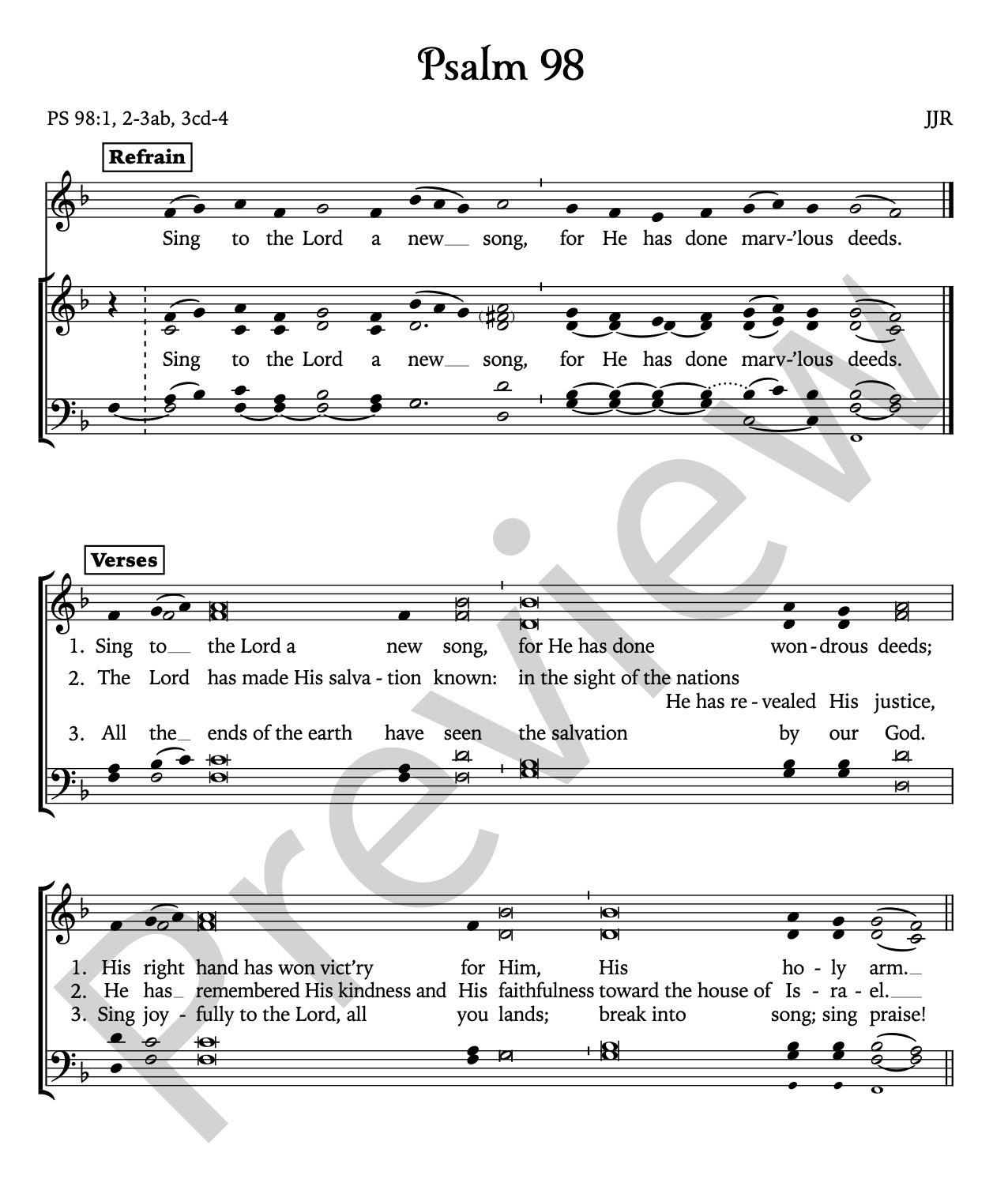 Image 1 of 1
Image 1 of 1


Psalm 98 • Sing to the Lord a new song... (Ave Verum)
James J. Richardson’s setting of Psalm 98, “Sing to the Lord a new song, for He has done marvelous deeds.”
Melody is based on the traditional chant Ave Verum Corpus. †1
Click HERE to download a graphic of the refrain for insertion into worship aids.
—————
For a version of the same psalm text set to the melody of the traditional Ave Maria, click HERE.
For a more modern-sounding setting (similar in style to Alstott) click HERE.
—————
At first, using the melody of Ave Verum Corpus may seem an odd choice for Psalm 98, however AVC refers to the miracle of the Incarnation of Christ, and medieval manuscripts place this Psalm’s refrain (Cantate Domino) as a verse after Puer Natus Est, the introit for Christmas. In other words, traditionally we sing of God’s marvelous deeds due to His incarnation. As extant manuscripts only set this verse according to a basic psalm tone formula since its main antiphon (Puer Natus Est) is what receives the florid melody, and as Ave Verum Corpus treats the same general theme while having a melody that paired very with this english translation, AVC was used as the basis of this setting instead.
James J. Richardson’s setting of Psalm 98, “Sing to the Lord a new song, for He has done marvelous deeds.”
Melody is based on the traditional chant Ave Verum Corpus. †1
Click HERE to download a graphic of the refrain for insertion into worship aids.
—————
For a version of the same psalm text set to the melody of the traditional Ave Maria, click HERE.
For a more modern-sounding setting (similar in style to Alstott) click HERE.
—————
At first, using the melody of Ave Verum Corpus may seem an odd choice for Psalm 98, however AVC refers to the miracle of the Incarnation of Christ, and medieval manuscripts place this Psalm’s refrain (Cantate Domino) as a verse after Puer Natus Est, the introit for Christmas. In other words, traditionally we sing of God’s marvelous deeds due to His incarnation. As extant manuscripts only set this verse according to a basic psalm tone formula since its main antiphon (Puer Natus Est) is what receives the florid melody, and as Ave Verum Corpus treats the same general theme while having a melody that paired very with this english translation, AVC was used as the basis of this setting instead.